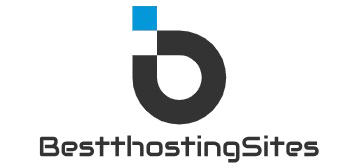Tips for Hosting Personal Websites
Welcome to the digital age, where having a personal website is no longer just a luxury for tech-savvy individuals or businessesit’s a necessity. Whether you’re an aspiring blogger, a freelance artist, a small business owner, or simply someone who wants to showcase their passion projects to the world, having a personal website can be a game-changer. However, creating and hosting a website can be a daunting task, especially if you’re new to the world of web hosting. In this comprehensive guide, we’ll delve into the essential tips for hosting personal websites, covering everything from choosing the right hosting provider to optimizing your site for performance and security. Let’s dive in!
Choosing the Right Hosting Provider

Before you can launch your personal website, you need to choose a hosting provider that suits your needs. With a myriad of options available in the market, it can be overwhelming to make the right choice. Here are some key factors to consider when selecting a hosting provider:
1. Determine Your Hosting Needs
Before you start comparing hosting providers, it’s essential to assess your hosting needs. Consider factors such as the type of website you’re building, the amount of traffic you expect to receive, your budget, and any specific features or tools you require. For personal websites with moderate traffic, shared hosting might be a cost-effective option. However, if you anticipate high traffic volumes or require advanced features, you may need to opt for VPS or dedicated hosting.
2. Assess the Reliability and Uptime Guarantee
Reliability and uptime are crucial aspects of a hosting provider. Look for a provider that offers a solid uptime guarantee (ideally 99.9% or higher) to ensure that your website is accessible to visitors at all times. Check customer reviews and independent uptime monitoring services to gauge the reliability of the hosting provider before making a decision.
3. Consider Customer Support Options
When you encounter technical issues or have questions about your hosting service, having reliable customer support can make a world of difference. Opt for a hosting provider that offers 24/7 customer support through multiple channels such as live chat, phone, and email. Test their support response times and expertise before committing to a hosting plan.
4. Evaluate Security Features
Security is paramount when hosting a website, especially if you’re collecting sensitive information from visitors. Choose a hosting provider that prioritizes security by offering features such as SSL certificates, regular backups, malware scanning, and DDoS protection. Additionally, ensure that the hosting provider follows best practices for server security and data protection.
5. Compare Pricing and Contract Terms
While cost shouldn’t be the sole determining factor, it’s essential to compare pricing plans and contract terms among hosting providers. Look for transparent pricing with no hidden fees, and consider the scalability options available in case your website grows in the future. Avoid long-term contracts if you’re unsure about the hosting provider’s service quality.
Setting Up Your Website

Once you’ve chosen a hosting provider, it’s time to set up your personal website. Whether you’re using a content management system (CMS) like WordPress or building a custom website from scratch, here are some tips to streamline the setup process:
1. Install a CMS
If you’re not a web development expert, using a CMS like WordPress, Joomla, or Drupal can simplify the process of building and managing your website. Most hosting providers offer one-click installations for popular CMS platforms, making it easy to get started. Choose a CMS that aligns with your website goals and technical proficiency.
2. Choose a Responsive Design
With the increasing use of mobile devices, having a responsive website design is non-negotiable. Ensure that your website is optimized for various screen sizes and devices to provide a seamless user experience. Select a mobile-friendly theme or template for your CMS or work with a web designer to create a responsive design from scratch.
3. Customize Your Website
Personalize your website to reflect your brand identity and engage visitors effectively. Add your logo, brand colors, and high-quality images to create a visually appealing site. Customize the layout, fonts, and navigation menu to enhance user experience and make it easy for visitors to find the information they’re looking for.
4. Optimize for SEO
Search engine optimization (SEO) is essential for driving organic traffic to your website. Optimize your website for relevant keywords, meta tags, and structured data to improve its visibility in search engine results. Create high-quality content, build backlinks, and monitor your site’s performance using tools like Google Analytics to track your SEO efforts.
Enhancing Performance and Security

Once your website is up and running, it’s crucial to focus on optimizing its performance and security. Slow-loading websites and security vulnerabilities can deter visitors and harm your online reputation. Here are some tips to enhance your website’s performance and security:
1. Enable Caching
Caching can significantly improve your website’s loading speed by storing static files and web page elements for quick retrieval. Enable caching plugins or server-side caching to reduce load times and enhance user experience. Regularly clear your cache to ensure that visitors are always viewing the latest version of your website.
2. Compress Images and Files
Large image and file sizes can slow down your website’s loading speed. Compress images and files using tools like Photoshop, TinyPNG, or WP Smush to reduce their size without compromising quality. Use responsive file formats like WebP for images to further optimize loading times on different devices.
3. Implement CDN
A Content Delivery Network (CDN) distributes your website’s content across multiple servers worldwide, reducing latency and improving loading speeds for users in different geographical locations. Integrate a CDN with your hosting provider to deliver content more efficiently and enhance the performance of your website.
4. Regularly Update Software and Plugins
Outdated software and plugins can pose security risks to your website, making it vulnerable to cyber threats. Stay vigilant by regularly updating your CMS, themes, and plugins to patch security vulnerabilities and ensure optimal performance. Enable automatic updates where possible to stay protected against emerging threats.
5. Backup Your Website Regularly
Backing up your website is essential to safeguard your data and ensure quick recovery in case of accidental deletions, server failures, or cyber attacks. Use automated backup solutions provided by your hosting provider or install third-party backup plugins to schedule regular backups of your website files and databases. Store backups securely in offsite locations for added protection.
Monitoring and Analytics

Monitoring your website’s performance and analyzing visitor behavior can provide valuable insights to optimize your online presence. By leveraging monitoring tools and analytics platforms, you can track key metrics, identify trends, and make data-driven decisions. Here are some monitoring and analytics tips for personal websites:
1. Use Google Analytics
Google Analytics is a powerful tool for tracking website traffic, user engagement, and conversion rates. Install Google Analytics on your website to gain in-depth insights into visitor demographics, behavior flow, and acquisition channels. Use this data to refine your content strategy, improve user experience, and drive conversions.
2. Set Up Google Search Console
Google Search Console provides essential information about your website’s presence in Google search results, including indexing status, search queries, and mobile usability. Verify your website with Google Search Console to monitor search performance, detect indexing issues, and receive alerts about security issues or penalties. Address any reported issues promptly to maintain your website’s search visibility.
3. Monitor Website Performance
Track your website’s performance metrics such as page load times, server response times, and uptime using monitoring tools like Pingdom, GTmetrix, or UptimeRobot. Set up performance alerts to receive notifications about downtime or slow loading speeds, allowing you to address issues promptly and minimize disruptions for visitors.
4. Analyze User Behavior
Utilize heatmaps, scroll maps, and click tracking tools like Hotjar or Crazy Egg to analyze user behavior on your website. Understand how visitors interact with your content, identify popular pages, and uncover usability issues that may impact user experience. Use this data to optimize your website’s layout, content placement, and calls-to-action for better engagement.
Common Misconceptions About Hosting Personal Websites
Despite the abundance of information available on hosting personal websites, there are several misconceptions that persist among website owners. Let’s debunk some common myths and misconceptions:
1. Myth: Free Hosting is Sufficient for Personal Websites
While free hosting services may seem attractive for personal websites, they often come with limitations such as ads, limited bandwidth, and lack of customization options. Investing in a reliable paid hosting service ensures better performance, security, and support for your website.
2. Myth: Hosting Providers Guarantee 100% Uptime
Despite uptime guarantees offered by hosting providers, it’s unrealistic to expect 100% uptime due to unforeseen technical issues, maintenance schedules, or cyber attacks. While a high uptime guarantee is essential, occasional downtime is inevitable in the web hosting industry.
3. Myth: Security is Solely the Hosting Provider’s Responsibility
While hosting providers play a crucial role in ensuring server security, website owners are responsible for securing their websites against cyber threats. Implementing security best practices such as using strong passwords, updating software regularly, and monitoring for suspicious activity is essential for protecting your website.
Conclusion
To wrap things up, hosting a personal website involves more than just setting up a domain and launching a site. By considering the tips outlined in this guide, you can create a secure, high-performing website that resonates with your audience and achieves your online objectives. From choosing the right hosting provider to optimizing your website for speed and security, every step contributes to a successful online presence. Remember, your personal website is a reflection of your brand and identity, so invest time and effort into making it a standout digital destination. Whether you’re a creative professional, a small business owner, or a passionate hobbyist, hosting a personal website opens up a world of opportunities to connect, engage, and inspire. Start your web hosting journey today and watch your online presence thrive!




